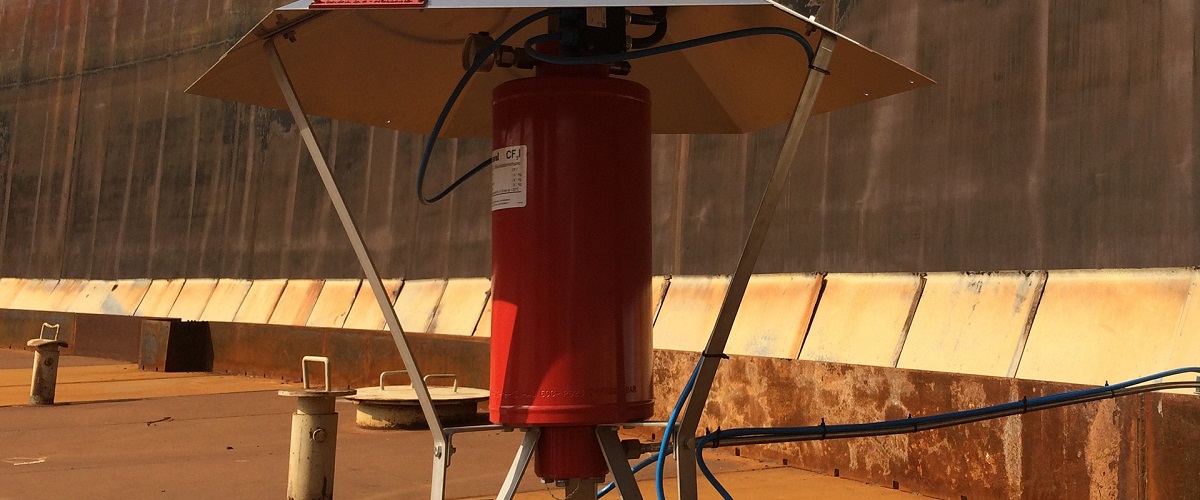
Gas Based units can be configured with the following operational methods:
- Pre-action using a pneumatic linear heat detection system
- Pre-action using an electrical linear heat detection system
- Wet type using closed head nozzles
Discharge of the extinguishing gas is gained via a propellant gas (Nitrogen) stored in the container.
Gas extinguishing medium available for the unit are:
- HFC 227 ea
- CF3I
Discharge Nozzle are closed head (discharge takes place only from those activated.)
Fire Protection Strategies:
Actuation & Monitoring Rim Seal Units interconnection with the main control system or F&G can follow different wiring philosophy depending on the oil company fire protection strategy, rim seal unit type and monitoring requirement. Actuation of foam based rim seal units can be: Automatic or Single Zone and Automatic & Remote Manual Multiple Zones
Automatic or Single Zone
Automatic actuation takes place via a pneumatic or an electric trim. When pneumatic only one unit will discharge where fire is detected. If fire spreads laterally other units will actuate accordingly. Remote actuation is possible installing a pilot SOV on each unit.
Automatic & Remote Manual Multiple Zones
Automatic Multiple Zone actuation is possible only for foam based rim seal units and it is achieved using a unique pneumatic fire detection tubing interconnected to each unit. Independently from fire location all units will discharge simultaneously. Remote actuation is achieved installing one or more SOV. Remote electric actuation is used when the units are to be activated from control room because used for vapor seal purpose.
With some foam based rim seal units it is in fact possible to integrate their action for vapor containments aimed at protecting the floating roof tanks from being involved in a domino effect. In such cases, should a tank be involved in an uncontrolled full surface fire, the fire protection strategy calls for spraying the nearby tanks in order to cool the metal surface and prevent mechanical failure of the shell. The heat radiated though can be such that the fuel content inside the nearby tank heats up to a point that vapors are likely to be released from the seal. Such a mixture creates a flammable atmosphere above the tanks that can ignite under the radiated heat and cause the fire to spread known as the domino effect.
The foam based rim seal units can be so designed to enter into the fire protection strategy of vapor containments creating an additional chemical seal on the radiated tanks in order to block the fuel vapors to exit the seal zone.
With such configuration it is possible to call the tank units into operation from the control room on each tank that is identified as being at risk. This additional measure of protection safeguards the tank from being involved into a domino effect increasing significantly the degree of safety of the whole tank farm.
Interfaces with control systems
The interface with the control system or F&G main panel allows for monitoring the unit status in stand by condition and can be arranged according to different architectures depending on the degree of monitoring that wants to be achieved. The two main architectures are Point type interconnection and Cumulative Zoning
Point Type interconnection
Allows for monitoring of each unit located on the tank can be achieved via hardwired interconnection.
Cumulative Zoning
Allow for monitoring of the units as a group can be achieved via hardwired interconnection.
Monitoring
Control Panels can be connected to third party DCS or dedicated monitoring station (SCADA). Graphic maps will be displayed on the monitor screen indicating the status of all rim seal units.
Our Services
SISICO CF3I for protection of rim seal on floating roof tanks is a fully prefabricated system and requires limited manpower for installation on the tanks roof. Each storage tank has one or more independent system.

